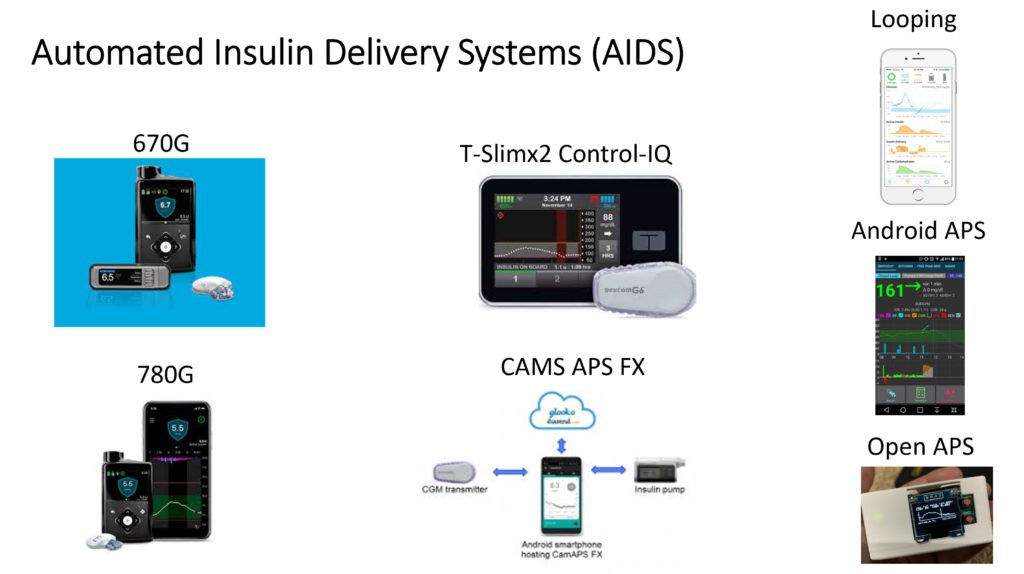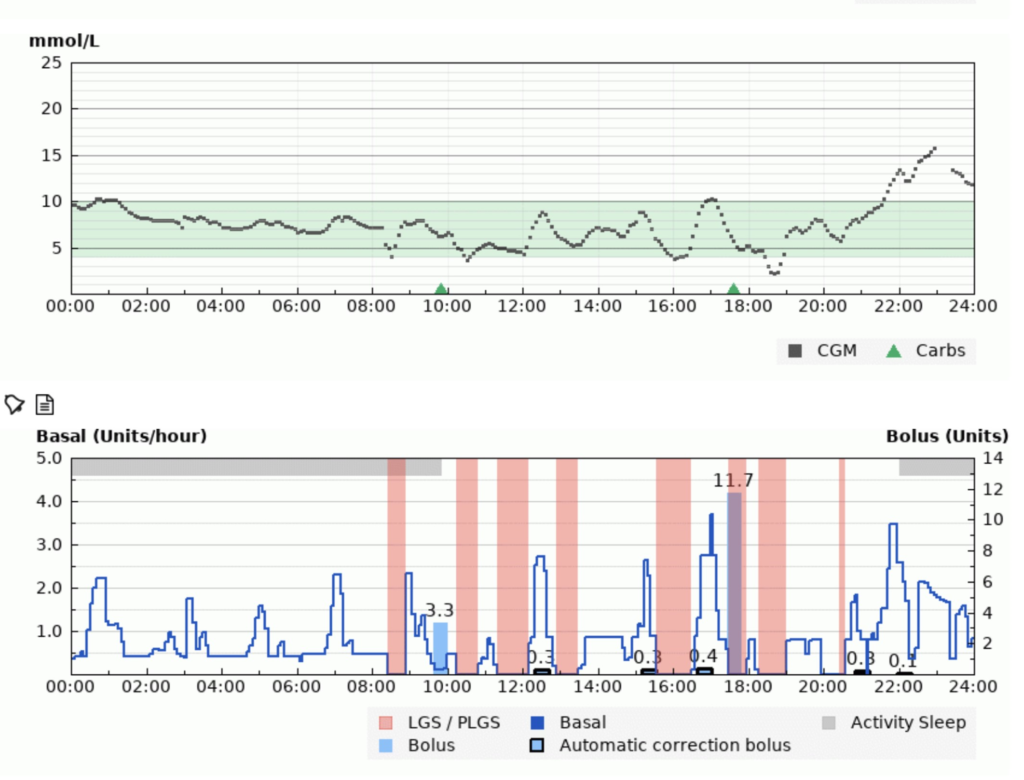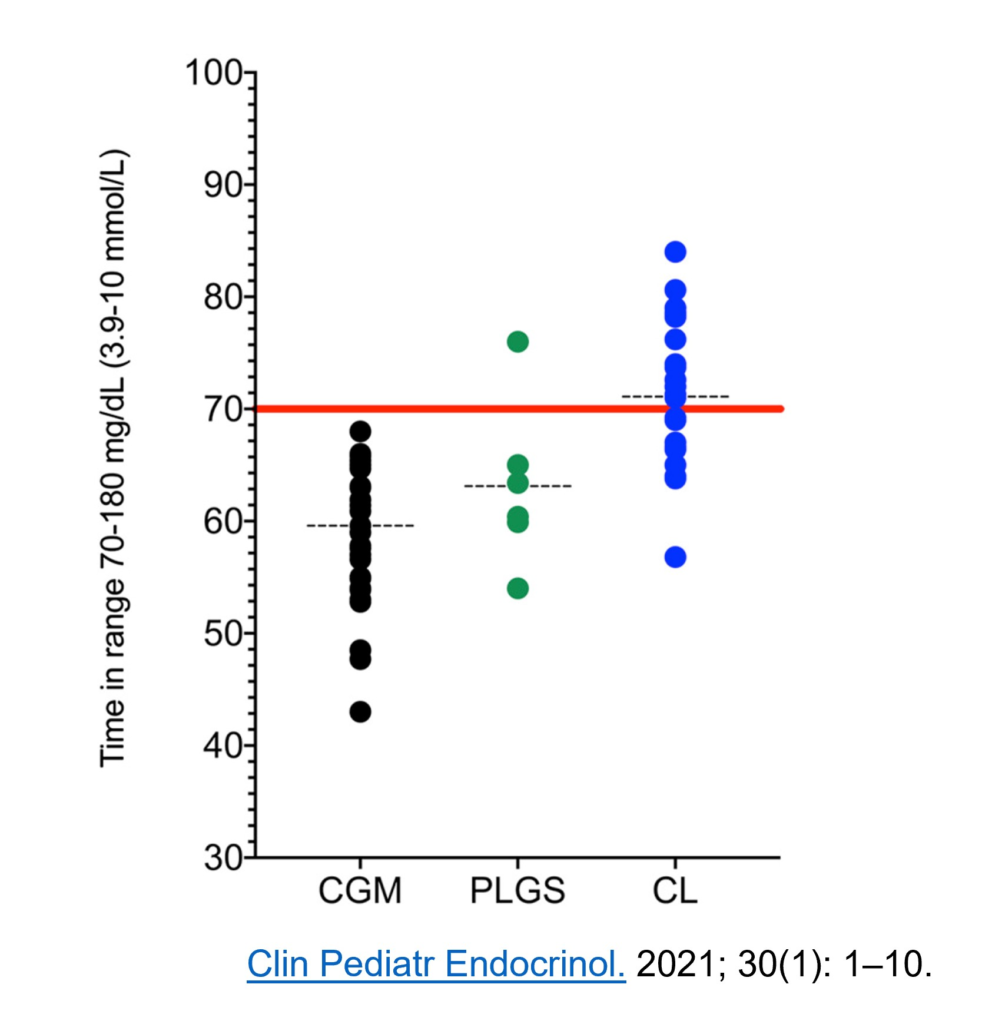Dear Dani, Grace and Jude,
Note: This page is advice for Grace, Jude and John. For any other reader, it’s information only. No therapeutic relationship is formed – read this.
Adhering to the principle of skin in the game, I spent four years (April 2018 to April 2022) acquiring personal and professional experience before putting pen to paper.
I have tried and tested the Medtronic 670G, T-Slimx2 with Control IQ, Looping and Android APS. Also, at work, I have now seen over fifty people on a range of AIDS. Quite simply, they are all game-changers!
Let’s begin.
Part one is for everyone with type 1 diabetes and their support network, who wants to:
- Understand what AIDS are and how they work at a basic level
- Have simple decision-making criteria when selecting an AIDS
- Acquire tips and tricks to get the most out of their AIDS
Part two is a John Pemberton special! A nerdy deep dive into everything:
- Insulin on board and carbs on board
- Target levels
- Subtle differences in how the algorithms work
This will be enjoyed by people who like having their melon twisted.
Equally, it is superfluous for people who just want to know what to choose and how to use it, that’s you, Dani.
What are AIDS and how do they work, at a basic level?
AIDS have three components:
- An insulin pump
- A CGM device
- An algorithm that drives automatic insulin adjustments to stop highs and lows, that is in the pump, or a SMART phone APP
Here are the current systems available (April 2022):

- Medtronic 670G & 780G
- T-Slimx2 with Control-IQ
- CamAPS FX
- A range of unregulated Do It Yourself (DIY) options:
All AIDS have pros and cons which we will get into shortly, however, they operate similarly.
- If the glucose level is predicted to rise above the target level, the algorithm calculates how much extra insulin is required to stop the glucose in its tracks. It gives extra insulin by increasing the pump basal rate or delivering an automatic correction bolus.
- If the glucose level is predicted to fall below the target level or to hypoglycaemia, the algorithm slows down the basal rate or stops insulin delivery.
- The user must enter all carbohydrates eaten and deliver a food bolus for the carbs. AIDS are not yet clever enough to allow eating without food bolus insulin. So the foundations of three balanced meals, accurate carbohydrate counting and delivering food insulin 10-20 minutes before eating still apply!
A picture paints a thousand words.

In the above example, you can see the CGM trace on the top and the insulin delivery on the bottom.
How does the algorithm increase insulin?
Overnight, you can see when the glucose level is above the target level, the algorithm increases basal insulin to bring it back to target. Also, at 16:30 when the glucose is rising rapidly and predicted to go quite high, the algorithm automatically corrects with 0.4 units of bolus insulin.
How does the algorithm decrease insulin?
During the day you can see lots of pink bars that represent where the basal insulin has been suspended to stop an episode of hypoglycaemia. Just before the pink blocks, you can see the basal insulin has been slowed down.
The eagle-eyed of you will notice that this person had given a bolus for breakfast at 09:49 and the evening meal at 17:36. Those are the light blue bars of 3.3 and 11.7 units respectively. Like is said, you still gotta bolus for those carbs!
What improvement in diabetes control can I expect using an AIDS?
This graph summarises the expected benefit in terms of numbers.

- All the studies using CGM represented by black dots show on average you can expect about 60% time in range (3.9-10.0mmol/L or 70-180mg/dL).
- Time in range does not improve much when pumps can suspend insulin to prevent lows, the green dots (PLGS).
- When the ability to increase insulin is added to become a closed-loop (CL), or as we are calling them AIDS, the time in range jumps to above 70% with the possibility of more than 90%.
- From my clinical experience, a user can expect to increase their time in range by 10-25% from their before AIDS time in range.
But here is the kicker!
This 10-25% improvement is achieved with less daily diabetes management, not more!
Normally, to achieve more than 70% or higher time in range, a person with diabetes must:
- Check their CGM 20-50 times per day
- Give multiple correction bolus’s
- Swallow lots of glucose to prevent hypos
- Keep a detailed log of events and continually learn through trial and error
I must confess, I love this part of diabetes because I am a trial-and-error nerd!
However, this can quickly lead to diabetes burnout, frustration and eventually giving up.
In life, there are seldom things that reach the promised land of;
Getting more by more by doing less!
AIDS are one such example – A triumph for human ingenuity!
The main thing that makes AIDS the dog’s danglers is……
You get your 8 hours of sleep back!!!
No more hypos overnight.
No more waking with highs.
Flat CGM lines overnight and waking rested, both parents and people with type 1!
Now that you understand what AIDS are and the benefit you can expect, it’s time to think about how to choose the right system.
Before we do that please understand this.
All AIDS will improve your glucose control and quality of life.
Therefore, if you do not have access to certain AIDS, do not stress.
They all do a great job and will get you that 10-25% improvement time in range with less diabetes hassle!
So get your rose-tinted glasses on and work your way through the three questions that will help you decide what’s right for you.
